Table of Contents
How to Create an Optimal Google Ads Campaign Structure
Campaign structure is eminently important to your Google Ads services for many reasons. The structure of your account includes campaigns, ad groups, keywords, negative keywords, ads, and other targeting methods which will allow you to easily manage your ads account, run tests, and simplify reporting. There is not one magical way to structure your account, as each company and industry can vary, but following these guidelines can lead to higher quality scores and help you stay organized to better optimize your account.
Related Content:
To start, you’ll need to identify the best way to create campaigns for your business. At GFD we recommend you keep your campaign structure as simple as possible to maximize daily budget within one campaign, better utilize smart bidding and make it easy to manage. If you need to segment campaigns, below are the factors to consider:
1. Budget Allocation
If you have a specific amount of funds allocated to marketing in a particular area, then you will likely want to create separate campaigns based on this. Spend is only controlled at the campaign level.
2. Keyword Groupings and Keyword Traffic
Ensure the searches triggered by your keywords are relevant to your business by organizing your keywords based on product and service categories, as well as website structure. If you are targeting a variety of keywords and some have a high volume of traffic while others are lower in volume, you may want to keep these in separate campaigns. Otherwise, your campaign budget will be spent mostly by the high volume keywords and the little guys will never get their share.
3. Your Location Targeting
Your location is set at the campaign level, so if you are looking to target different locations for different products and services, you’ll need to separate those into different campaigns.
After setting your target locations by city, state, radius, or zip it is important to review your location settings.
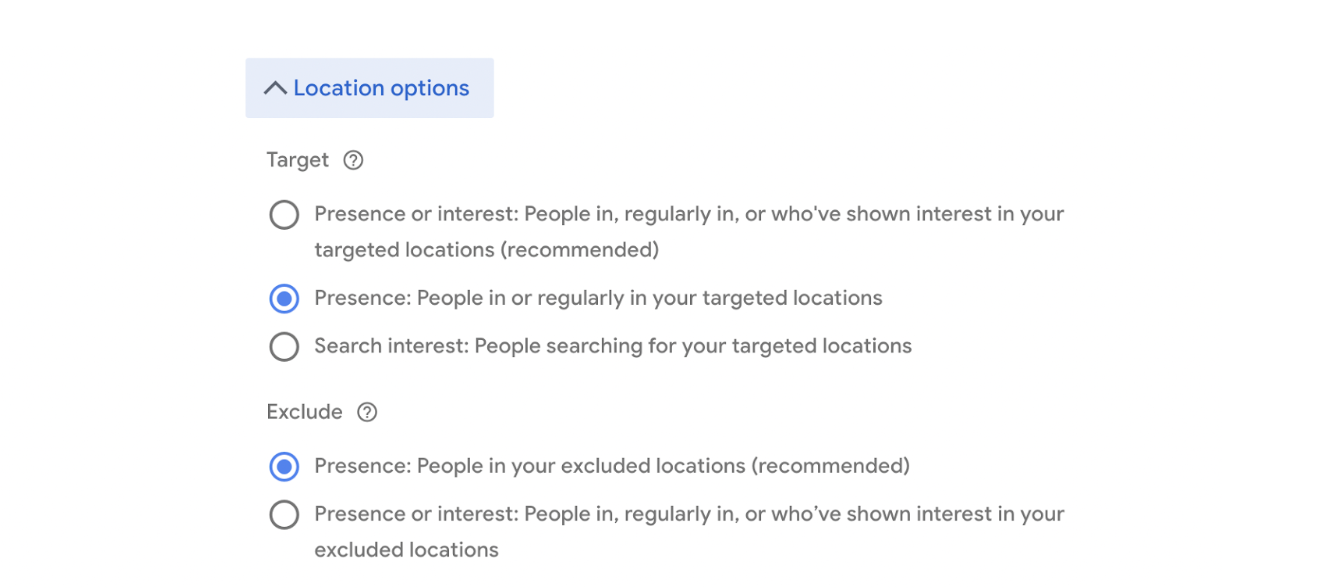
Of the 3 options for target locations, we recommend at GFD selecting People in your targeted locations. Although it is not the recommended option by Google it is better targeted to people in your specific location. Although in some cases such as travel related campaigns the setting people in, regularly in, or who have shown interest in your target locations may be a better fit. It is important to think about your target user and select the setting that makes the most sense for your campaign objectives.
4. Language Targeting
If you are targeting users in different languages, you’ll need a campaign for each language in order to designate keywords, ads, and landing pages to the user in each specific language. Select the language(s) that your customers speak and ensure your ad copy and landing pages match that language. If you are targeting multiple countries and your customers may speak multiple languages it may be best to select all languages to ensure you are showing to your users regardless of the language setting on the computer that they are using.

5. Your Brand
We recommend separating your brand keywords into their own campaign if possible. This can give you full control on how much of your marketing dollars are spent making sure you show up when users are searching for your brand. Always remember: If you are not at the top of the page, someone else will be.
6. Bid Strategy
If you think a certain bid strategy will work well for a specific campaign then you may want to consider having it in a separate campaign.
Smart bidding allows you to automatically bid on your keyword without a lot of manual guessing, and it can leverage adjusting your bids based on your goals while using data as the basis of the decisions. There are a few automated bid strategies available, but it’s important to understand how each one can impact results.
We tend to recommend launching a campaign with enhanced CPC to allow a more manual effort for adjusting bids as needed and then moving to an automated strategy when conversion data starts to accumulate.

Additionally, we recommend using enhanced CPC for optimal results. Google will show a warning that setting bids manually may lower performance but rest assured this is a great place to start.
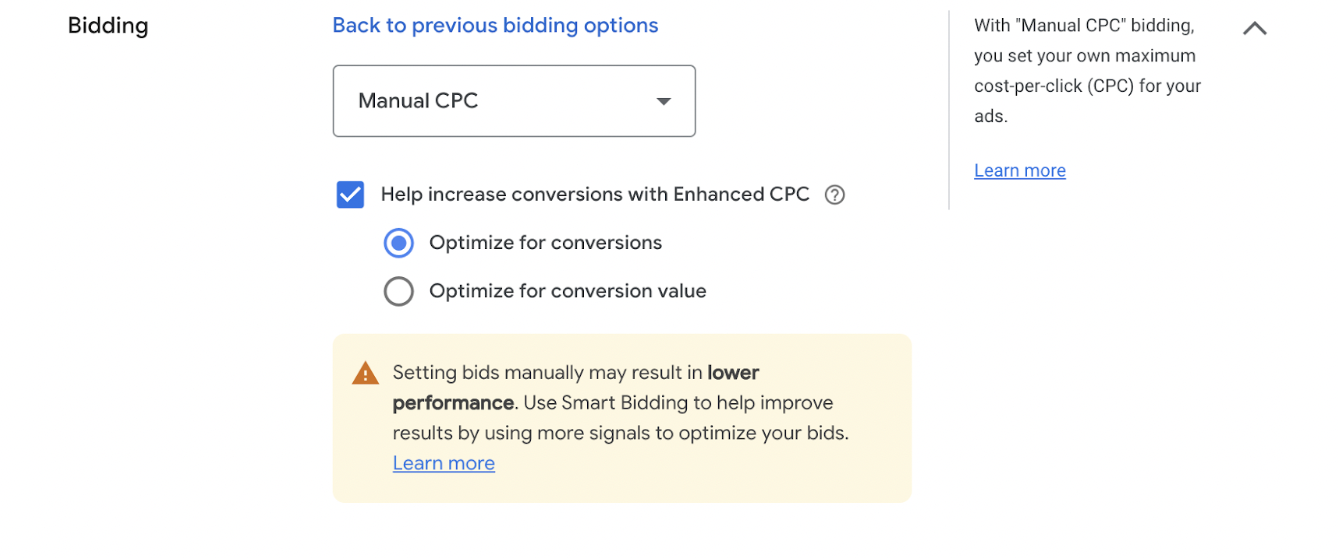
Once conversion data has accumulated and you have at least 50 conversions in a 30 day window, we recommend switching your bid strategy to Target CPA, Target ROAS or Maximize conversions depending on your business objectives.
7. Campaign Settings
When creating Google ads campaigns, there are some settings that you’ll want to be aware of.
Search Partners & Display Networks
This is automatically something that you are opted in to when creating a campaign. This allows your ads to appear on properties owned by Google, such as YouTube and Google Maps, other companies they have partnered with, and other websites that sell ad placements. While increased placements sounds ideal, there are drawbacks to consider, like lack of control and use of parked domains. In short, we recommend opting out of search partners and display networks as a best practice.
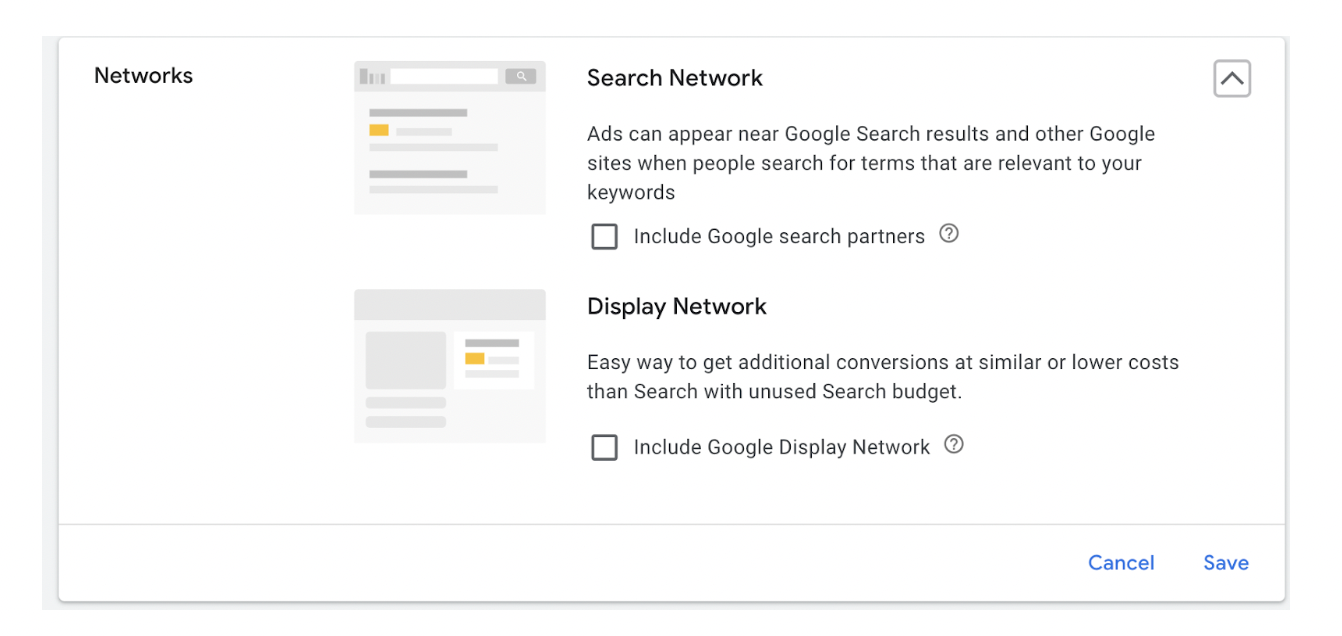
Excluded Content
Opt out on showing your ads on placements that don’t represent your brand. For example, opting out of placements that include profanity or are sexually suggestive may be a good idea for your brand identity.
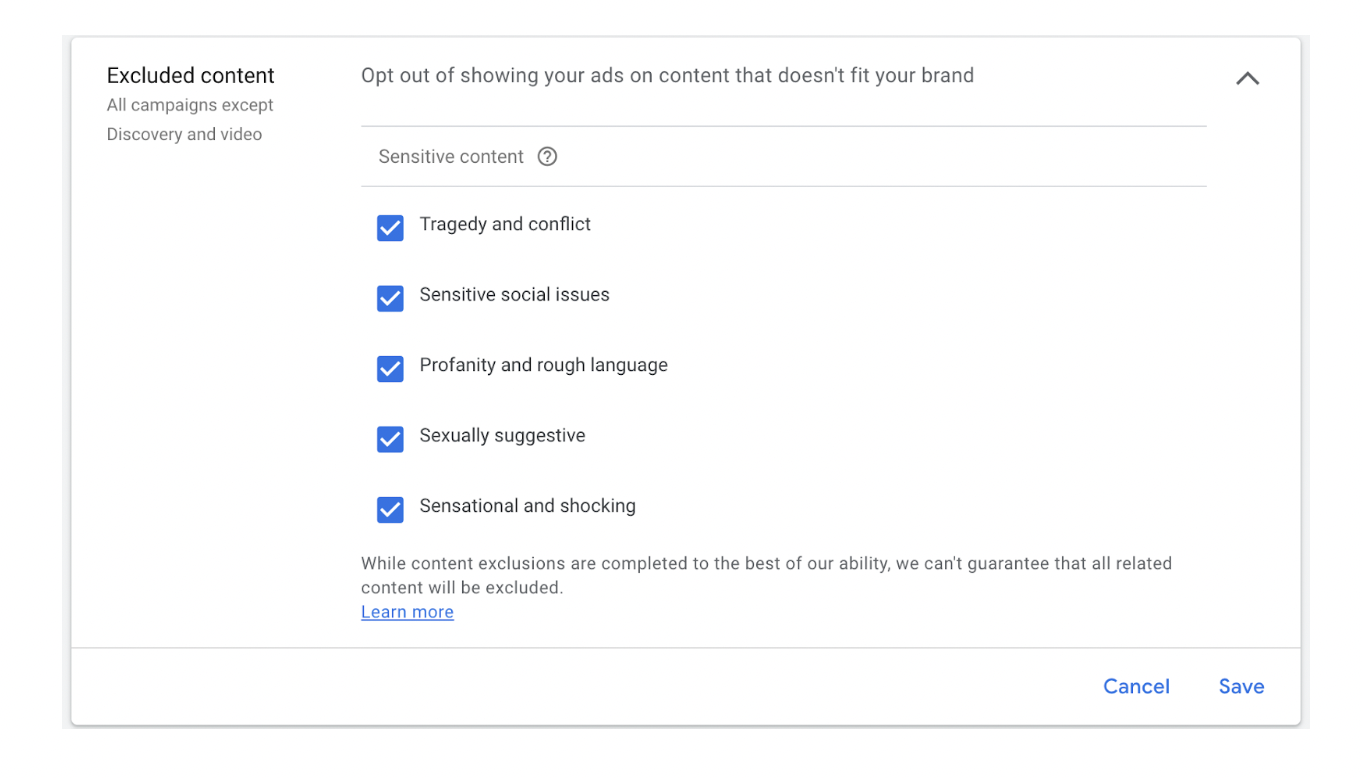
Excluded Types and Labels
Exclude digital content labels that may not represent your brand well, such as mature audiences. Also, you should consider opting out of parked domains, as this could allow you to spend your marketing dollars without a real person seeing your ads.
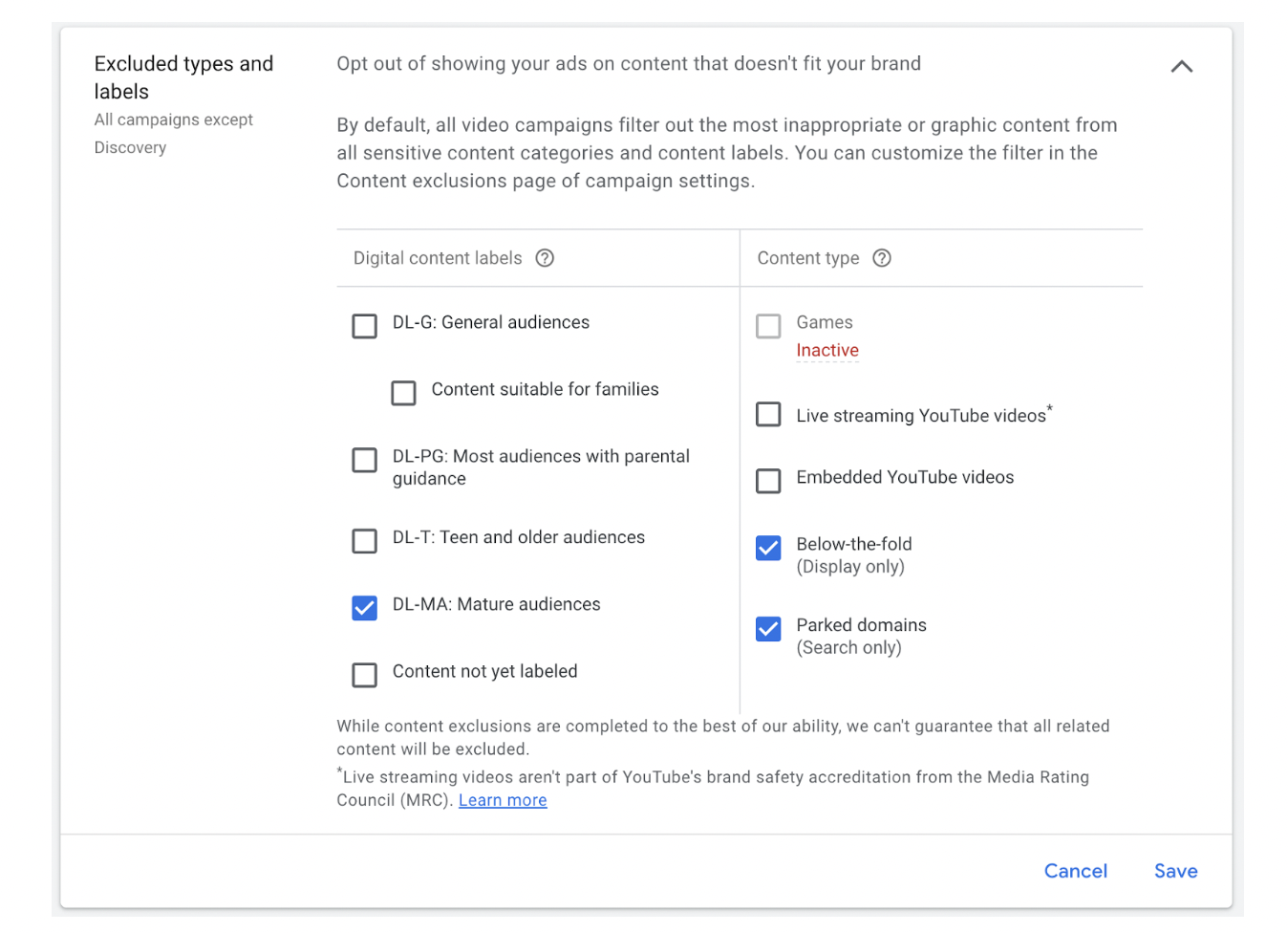
8. Quality Score
Quality score gives you an idea of how your ad stacks up against other advertisers. Higher quality scores can lead to lower CPCs and higher ad positions.
First, make sure you optimize for ad relevance. Be sure you have quality ad copy that matches the intent behind a user’s search and that your keywords are utilized within the ad copy. Utilize extensions, Google looks at ads and extensions when calculating the quality score. Be sure to take advantage of as many extensions as possible to secure more real estate on the SERP.
Secondly, optimize for landing page experience. Be sure your keywords and ads are relevant to your landing page to ensure great user experience. Ensuring that your keywords appear both in your ad copy and on your landing pages will help increase quality score leading to higher ad rank positions and lower CPC’s.
Summary
There are multiple ways to set up a great Google Ads search campaign and many considerations along the way. Be sure to consider what is best for you and what will help you hit your business objectives and drive results. Not sure where to start? Reach out to the GFD Paid Media team and we can help!
About Go Fish Digital
Go Fish Digital is an award-winning, full-service Google Premier Partner that’s ready to take your digital marketing to the next level. Our team of creative, technical marketers and industry-leading experts perform services in Search Engine Optimization, Digital PR, Online Reputation Management, Content Marketing, Conversion Rate Optimization, Website Design & Development, Paid Media, Influencer Marketing, and Copywriting for a wide array of different B2B and B2C clients.
Search News Straight To Your Inbox
*Required
Join thousands of marketers to get the best search news in under 5 minutes. Get resources, tips and more with The Splash newsletter: